Considerations
To undertake a ground floor thermal insulation upgrade it is first important to establish if it is possible or not. In domestic buildings, broadly speaking, there are two styles of floor type - solid ground floor and suspended floor, each with its pros and cons.
Solid ground floors are where the layers of the floor are laid continuously on top of each other. This leaves no voids and no space for insulation upgrade to be installed. On a property built in the 90s onward, the solid ground floor was likely insulated at the construction stage however in older properties this is not common. If there is no insulation in a solid floor the options to upgrade the floor insulation are limited to those undertaken by a competent builder as the existing floor would need to be dug up and re-laid. The only other option would be to install ultra-thin high performance insulation directly under the floor finish.
Suspended floors can be constructed in timber or concrete. For domestic buildings, a suspended concrete floor would normally be fitted with insulation at the construction stage as part of a system, normally with preformed polystyrene blocks. Suspended timber floors are generally fitted with no insulation in the floor unless the building was built in the 90s onward therefore we will look at uninsulated suspended timber floors for this blog. An easy way to establish if the floor is suspended timber would be to check for air bricks installed below the DPM coarse in the external wall and if these air bricks are present then it is a suspended floor. The air bricks allow for a continuous flow of air under the floor which is beneficial for keeping the floor free of damp but can, unfortunately, allow heat to transfer from the ground floor of the building to outside easily. In these cases, it is prudent to insulate the floor in a way that effectively reduces heat transfer but maintains the airflow.
Insulating suspended timber floor.
There are many possible thermal insulation options of varying costs however site-specific factors may dictate what is the most appropriate insulation type. If possible, tackling the work from beneath is generally preferred as the floor can remain in place whereas doing this from above is generally a more significant and costly project which involves removing and relaying all floor coverings.
The possible insulation options can be split into three types:
1. Rigid Roam - PIR foam board, extruded polystyrene, expanded polystyrene and phenolic foam board.
These insulations are tightly fitted between the joists and require careful, accurate cutting to avoid thin gaps between the board edge and joist edge. These thin gaps create a passage for heat to escape the property so additional products like expanding foam and foil tape can be used between the boards and joists to further seal the floor and help prevent this passage of heat. The insulation will likely require further support underneath the joist to avoid the boards falling through if the floor flexes over time. This is simply done with timber battens fixed to the underside of the original joists.
2. Flexible Roll and Slab – glass/mineral fibre wool, sheeps wool, hemp, wood fibre and recycled plastic.
These products will also require a tight fit between the joist and the insulation edge. This is easily achieved by fitting them under compression allowing the flexible insulation material to expand closing any gaps along the joist edge. Additional under joist support in the form of a support net or breathable membrane will also be required as the material tends to slump out of position over time. The net or membrane can be fixed either to the underside of the joists (if working from below) or to the top and draped between the joist spaces (if working from above). Using a breather membrane instead of a net should further improve the effectiveness of the insulation layer as airflow under the building will be prevented from ‘washing’ through the fibrous insulation material. This is not a concern when using board insulation as this is a *closed-cell material and in the case of PIR and phenolic have an air and moisture tight foil facing. Performance can be further improved by tightly wrapping membrane around timber battens and floor perimeter and fixing back tight to the external wall completing the seal.
3. Multi Foils
Multi foils are vapour impermeable and rely on reflected heat, and airtightness to reduce heat transfer. These are supplied on a continuous roll so can be easily fitted with less cutting. If installed to the underside of the joists the roll is stapled along the joist ends. Multifoil can also be installed over the joists and is fixed and held down using a U-shaped saddle clip providing an air gap above and below to improve performance. Much like the breather membrane, the multifoil should overlap at the edges and should be finished at the floor perimeter by lapping down the external wall and fixing back with a continuous batten.

Build up:
2. The insulation layer can be made up of any of the following types of insulation: Glass or Mineral wool (Knauf or Superglass), Sheeps wool (Thermafleece). PIR rigid boards (Xtratherm, Kingspan etc.), Phenolic foam rigid boards (Xtratherm, Kingspan etc.) and polystyrene.
3. Vapour Control Layer and airtightness layer.
4. Final floor layer build up.




